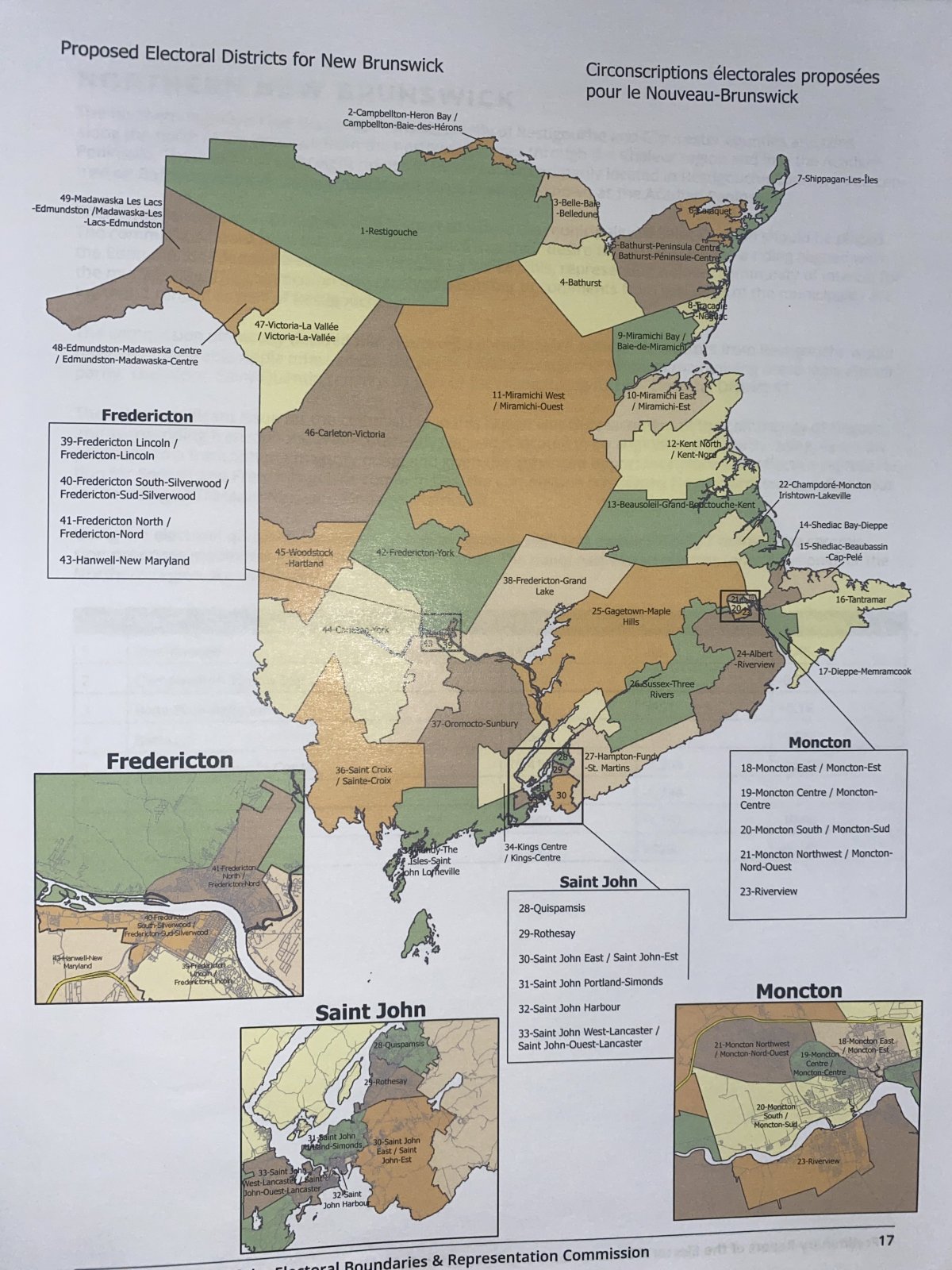The commission responsible for redrawing New Brunswick’s 49 electoral districts has released a preliminary report that stops short of making sweeping changes.

Roger Clinch and Camille Thériault, co-chairs of the Electoral Boundaries and Representation Commission, delivered the report to the clerk of the legislative assembly on Monday morning.
The commission will have 90 days to commence a second round of public hearings and return with a finalized report.
Despite significant population growth in recent years, the cities of Moncton and Fredericton did not see significant changes in representation.
“Lines have changed, basically creating new ridings, but in the same areas. So, there’s a lot of changes within, but not in the number of ridings, and not in the number of seats per region,” said Thériault, a former Liberal premier.
According to the report, members of the province’s northern communities feared that a dwindling population could result in the loss of representation to growing communities. However, each region has been allocated the same number of districts.
“Interestingly enough, although there has been a diminution of the number of people in the north shore, it’s not that significant when it comes to electors,” said Clinch, a former Progress Conservative member of Parliament.
Under the Electoral Boundaries and Representation Act, the commission must create districts that do not deviate from the electoral quotient by more than 15 per cent. The quotient for the report was 11,667, which means districts must fall between 9,917 and 13,417 electors.
While nearly every district did not exceed the threshold, based on the current figures, many could cross it over the coming years.

Get breaking National news
Each of Bathurst-Peninsula Centre, Caraquet, Shippagan-Les-Îles, Miramichi Bay, Miramichi East, Miramichi West and Tantramar were at least 10 per cent below the quotient.
Kent North, Shediac-Beaubassin-Cap-Pelé and Albert-Riverview are 10 per cent or more over the electoral quotient.
“So we’re quite happy with that because we respected the quotient, and that will give us hopefully better, effective representation,” Thériault said.
The co-chairs refused to discuss the changes in each specific region, saying they want to give a chance to New Brunswickers to see the new ridings and return with feedback.
Tantramar, formerly known as Memramcook-Tantramar, was the sole electoral district to deviate beyond the 15 per cent threshold by falling 22.36 per cent below the electoral quotient.
“I mean, it was linguistic and a community of interest, for example, and I’m saying that because it had impact on the only extraordinary circumstances,” Thériault said.
In “extraordinary circumstances” the number of electors in the district can deviate by as much as 25 per cent.
This can include the effective representation of the English and French linguistic communities, the report states.
In the regional breakdown, the report notes the districts’ “final configuration by the previous commission, resulted in a potential inequity on the basis that the francophone population within would not be able to be effectively represented.”
Memramcook, a primarily francophone community, is now part of the Dieppe-Memramcook riding.
A redraw of the electoral boundaries must be undertaken by an independent committee every 10 years. The new boundaries, once finalized, will be instituted for the next general election, which is currently scheduled for October 2024.










Comments